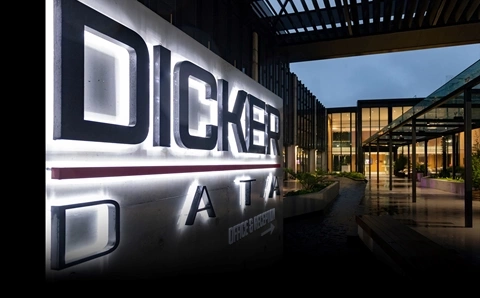This has opened up possibilities to build new service models. NGage’s Bloomfield says a key area for his company is migration. The Melbourne-based reseller was an early partner of flash vendor Pure Storage.
“An area where a customer will need the most help is migrating from one platform to another, especially when they are moving to a new vendor and where there is no clear migration method. That is probably where the biggest amount of services is to be delivered, as well as training around the new technology,” says Bloomfield.
NGage signed up with Pure Storage in October 2013, supplied by distributor Observatory Crest, “because they are the clear market leader in flash technology. Pure Storage fits in well with the NGage culture and we feel it’s extremely important to always be on the lookout for technology that will help our client,” says Bloomfield.
“Pure Storage addresses current market needs, delivers an in-depth strategy and roadmap, has multiple key customer success stories and delivers tangible value to customers.
“The flash adoption rate is moving quickly. Within the next year we anticipate 50 percent of clients will be utilising flash in the data centre.”
Bloomfield points out the key points that “set Pure Storage apart from the chasing flash pack” as: granular data reduction; consistent latency; high IOPS and performance; simplified management; high availability; and adds that it is cost effective.
He says that business has been “sensational”. NGage Technology Group has seen “great feedback from clients and we have had a number of success stories”.
Nimble’s Cohen, meanwhile, says that reference architectures allow partners to make significant money by delivering fully integrated “stacked” solutions. These often comprise storage, networking, software and services. “Some sophisticated resellers offer fully managed storage solutions where the customer owns the equipment, but the management is provided by the reseller.”
A focus on solutions
Oracle storage product director Sam Voukenas notes that there have and always will be implementation and migration services that go with the storage that partners can deliver. “Services such as data profiling have become really important for our partners.” In data profiling, the partner surveys the customer’s environment and then provides consulting about where the money is being spent, what sort of storage is being used, and recommendations about aligning service levels to the data.
Another trend is the rise of storage brokers, says Voukenas.
“With customers looking for a menu of services and opex rather than a capex models, this has created opportunities for partners to provide more value than just being a managed service provider.”
HDS’ Teague takes a similar line, suggesting that customers want a business outcome rather than simply a budget-friendly product and these outcomes are what CIOs and IT leaders are hanging their reputation on.
“Digital pathology is a good example of where HDS works with software partner Pixcelldata’s Collibio, and solutions and delivery implementation specialist Perfekt to jointly go to market with a high-value solution that addresses a very specific market segment and need.”
Risky business
Resellers are not simply adjusting from product- to service-led sales, they also need to contend with the disruption wrought by the cloud.
While the transition to cloud computing is well documented and acknowledged, the use of private clouds and on-premise storage remains an important source of business for many companies. But tempting as it might be, resellers that want to keep their customers for the long haul can’t get away with pushing those clients towards solutions that go against the client’s interests.
Gartner’s Chandrasekaran says research conducted by his organisation last year identified four primary use cases for storage on the public cloud, all of which are at different stages of transition. These included content delivery services, backup, archiving, and storage for primary application services that reside in the cloud.
“The [companies] I see moving the public cloud mostly are content distribution and archiving. That is primarily because archiving is not performance sensitive and, frankly, content distribution can be better delivered from the cloud.”
Backup has moved less to the cloud in our part of the world, adds Chandrasekaran, “but I hear from my North American peers that it is getting more mature”.
That still leaves a lot of in-house storage to manage and maintain. “Storage administrators care about performance and reliability, so for mission-critical services like Oracle databases, or even VDI, storage needs to be connected to the computing environment using high-speed fibre channel type networks. These are the workloads that will not move to the public cloud in the short term.”
Companies have other very good reasons for wanting to tread a cautious path to the cloud. Recent events such as the outage at public cloud leader Amazon Web Services and the collapse of US-based cloud provider Nirvanix have highlighted the risk of putting all your proverbial eggs in the public cloud basket.
According to HDS’ Teague, “Long-term cost, risk of data loss, and security and compliance issues are other reasons why organisations opt to keep infrastructure on premises or in a co-location facility. Enterprises might opt for a hybrid or private cloud model, but in most cases key components of the physical infrastructure remain in the data centre, especially for production environments.”
He notes, however, that a different set of rules applies in the mid-market segment. “The price point is more important, at the same time, security and compliance concerns are also resonating more strongly than in the past. The more specialised the service offering from [a managed service provider] – vertically and horizontally – the better they can compete with the commodity cloud.”
Oracle’s Voukanas also argues that the cost equation doesn’t always work in cloud’s favour, even for archiving – one of the most common use cases highlighted by Gartner. Voukanas says: “When you compare the costs per gigabyte per month for a cloud environment to what can be achieved in a customer’s data centre using a tiered storage solution, it is very comparable. And in some cases depending on how the data is used, it’s cheaper to stay on the tiered storage solution rather than move into cloud.”
Next: Blended approach




_(11).jpg&h=142&w=230&c=1&s=1)





.jpg&w=100&c=1&s=0)
_(8).jpg&w=100&c=1&s=0)







.jpg&q=95&h=298&w=480&c=1&s=1)





